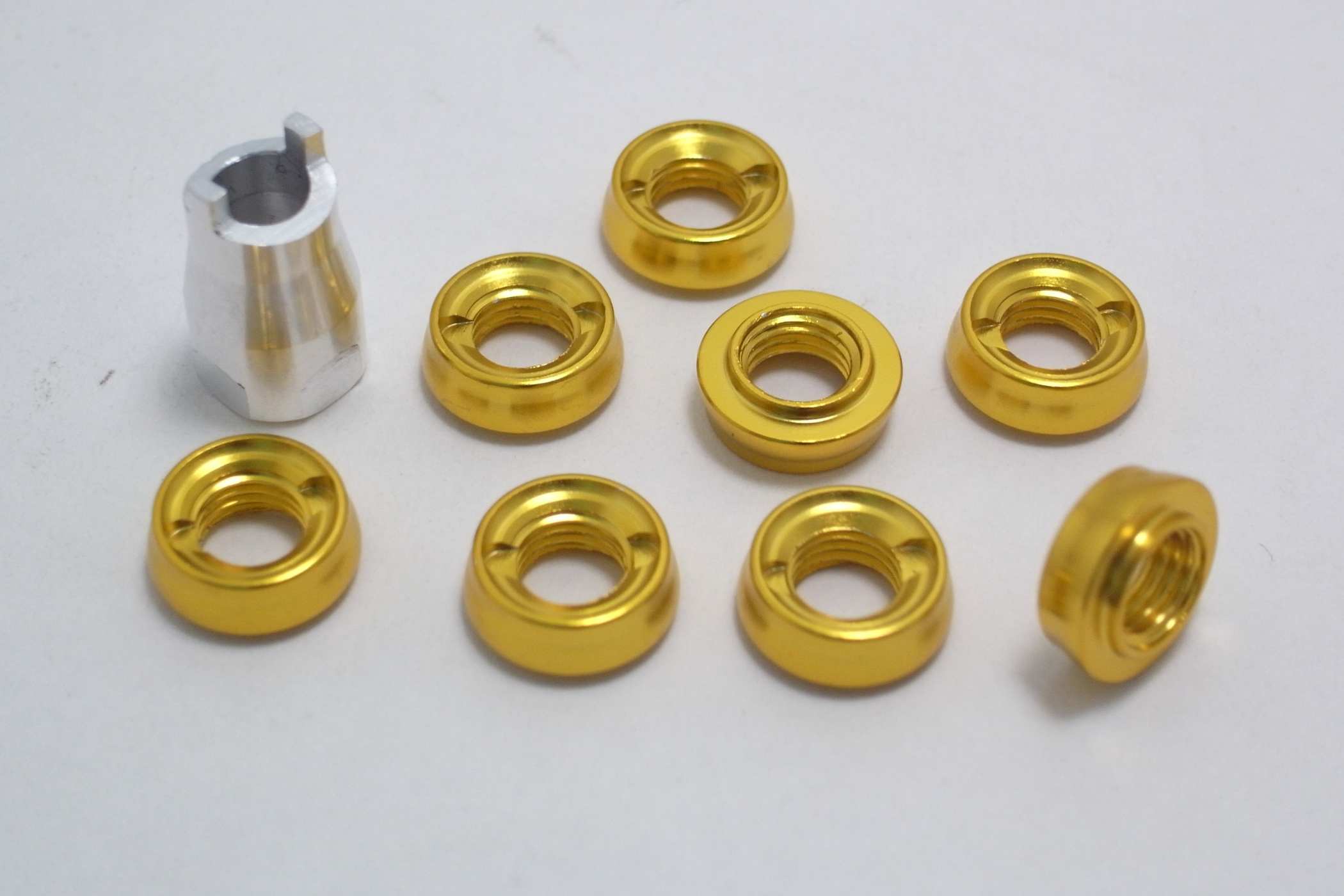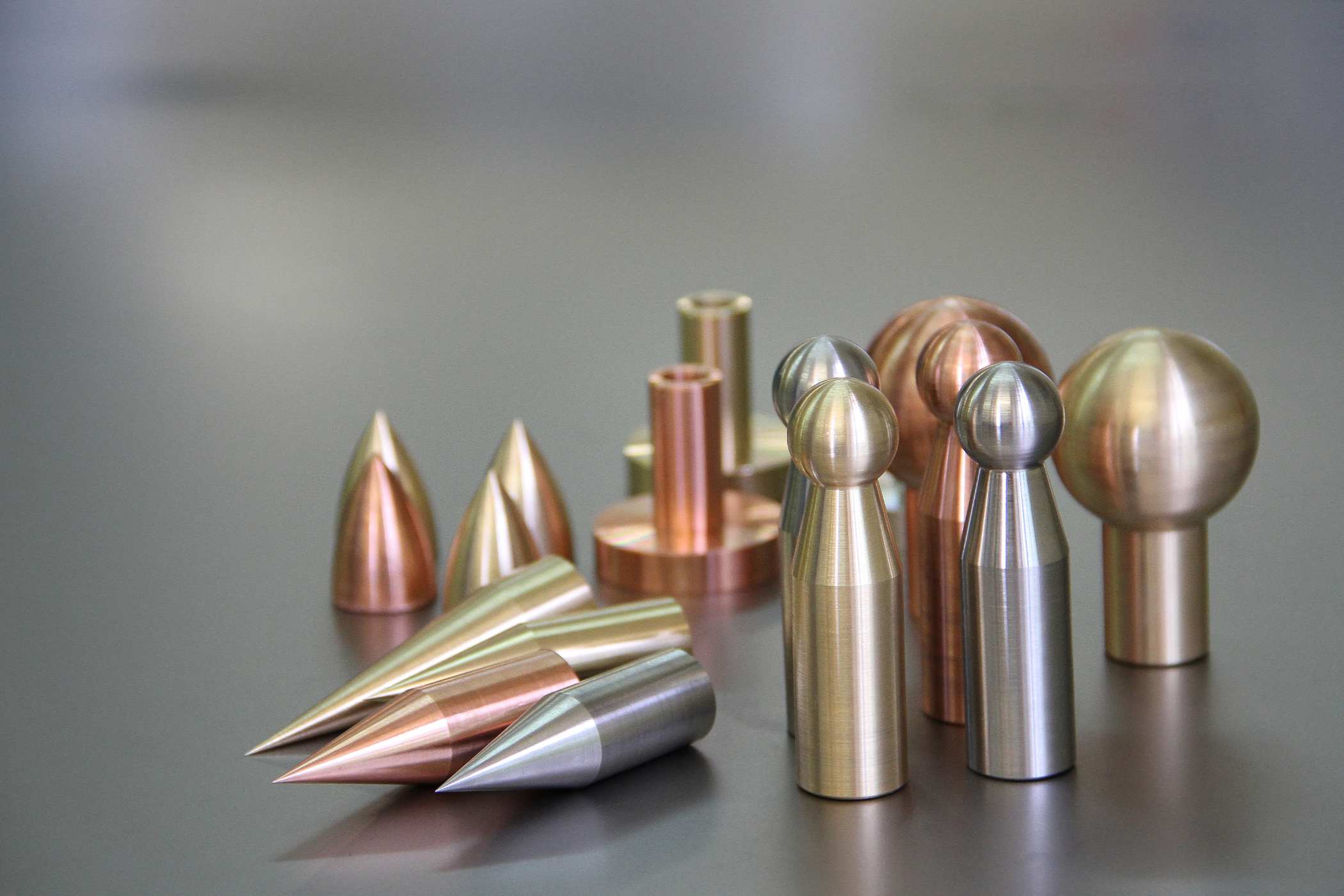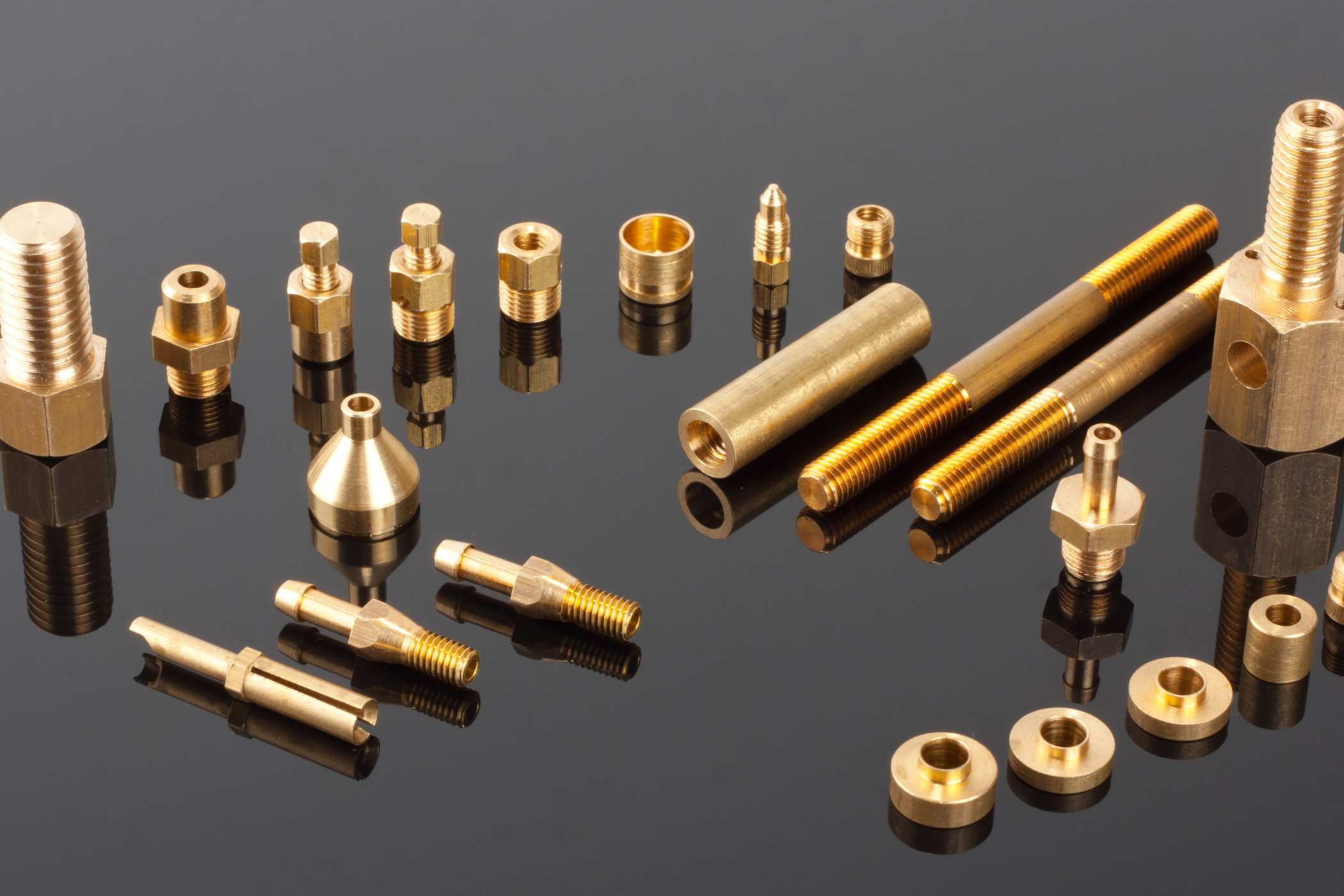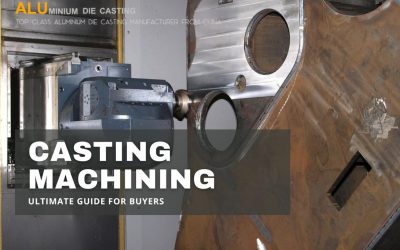Brass is an alloy of copper and other metals widely used in electrical, plumbing, and medical applications. Because of its excellent corrosion resistance and low friction coefficient, it is ideal for CNC machining. Brass is one of the most easily machinable materials on the market today. It has good machinability, ductility, flexibility, and a high material feed rate. The brass parts are produced to the correct size and surface roughness by the CNC machining. Such components include light, pipe, fitting, flare fitting, and gear. What other characteristics make brass convenient for cnc machining? What are the common brass grades?
Which kinds of finishes are appropriate for brass? Continue reading to learn more about the answers to these questions and related questions on the brass cnc machining parts.
Advantages of Brass CNC Machining Parts
CNC machining of brass has many advantages, which is why it is widely used in many industries. Here are the key benefits:
High Precision and Accuracy
CNC machines follow electronic plans with high levels of accuracy. This helps ensure the final output is correct and has gone through the standard checks to be accurate. This is the reason why brass parts can be manufactured to meet specific requirements time and again. It minimizes mistakes and increases the general quality of the products being manufactured. Reliability is an essential aspect of applications where the outcomes are significant. CNC machining also offers a method of sustaining small tolerances, which is necessary for most applications. Machining is very accurate, meaning the material’s performance and reliability are very high, and the tolerances are usually within ±0. 005 inches.
Exceptional Machinability
Brass is well known for its good machinability and ease of working, making it ideal for brass tooling. Complex parts can be produced with high precision and intricate features. This results in less time spent on the machines and, therefore, lower manufacturing costs. Another advantage of machining brass is that the tool life is also extended. Less wear and tear on tools means that the price is reduced. Moreover, brass has good machinability and enhances the manufacturing processes of products made from the material. High machinability allows for the creation of prototypes and fast production time with surface roughness ranging from Ra to 0.8 µm.
Corrosion Resistance
Brass is more resistant to corrosion in extreme conditions than any other material of a similar kind. This is good for areas with high humidity or where the item may come into contact with water. This durability is essential, especially in applications such as outdoor or marine environments. Brass is long-lasting, and products made from it do not degrade quickly. Brass is corrosion-resistant, which makes it durable and reliable. This property helps to minimize the amount of maintenance required, hence cutting down on costs that are likely to be incurred. Corrosion resistance also increases the life span of brass parts by many folds and can go up to more than 30 years in the right environment.
Versatility
The properties of Brass can be changed by changing the components of the material. This makes it possible to produce concentration alloys for specific applications. The material can be cut to fit the needs of various industries. This is why brass has been widely used in many fields, as it is very versatile. It is used in plumbing, electrical components, and other related applications. Depending on the grade of the brass, it will have a different level of strength and corrosion resistance. Versatility also enhances creativity in product design and use with tensile strengths of 350 MPa to 700 MPa.
Cost-Effectiveness
Brass CNC machining is relatively inexpensive and fast. It is possible to manufacture high-quality parts at a minimum cost. This makes it a good option for businesses that are operating under a tight budget. Reduced production costs do not affect the quality of the brass parts in any way. Efficiency contributes to the ability to set appropriate prices and achieve high profitability. Machining efficiency means that there is little wastage of material and that the material is used to the maximum possible extent. In general, brass cnc machining is very cost-effective, with the cost of the material ranging from $2 to $3 per pound.
Fast Production Times
CNC machines help in the fast and effective manufacturing of brass parts. Reduced lead times increase the general productivity of the business. Fast production is beneficial because it can meet the customer’s order faster. This speed is essential in satisfying the demand and the time the food has to be prepared. CNC machining is suitable for both small and large-volume production. Brass has good machinability, which favors rapid manufacturing processes. Short cycle times benefit businesses by allowing them to be more responsive and produce parts in hours rather than days.
Conductivity
Brass is electrically and thermally conducting material. This makes it ideal for heat or electricity transfer operations. It is commonly applied in electrical parts and heat exchangers. Conductivity leads to high performance in challenging technical applications. Conductivity is a parameter that is most important for the safety and functionality of the equipment. Brass is also characterized by good conductivity and relatively stable conductivity coefficients over a wide temperature range. This makes it suitable for multiple electrical and thermal applications, and its electrical conductivity is approximately 28% IACS (International Annealed Copper Standard).
Aesthetic Appeal
Brass has an inherent golden color with a shiny surface to it. It is preferred for ornamental applications and luxury goods. The material also has the aspect of beauty that makes people want to use it. Brass parts are used in applications that are considered luxurious and are supposed to be in the design category. Brass gives the product a nice finish, which makes the product more marketable. The look is still good, and little effort and attention are needed for maintenance. Beauty and utility go hand in hand, and they are used in items that require both looks and strength, such as musical instruments and architectural hardware.
Properties & Brass Alloy Types Used In Brass CNC Machining
Brass is a metal that is produced mainly from copper and zinc. It is hard and challenging; it does not corrode and can take tensile strengths of 350MPa to 600MPa. Brass is easily machined and has a machinability rating of about 100, the highest among copper-bearing alloys. It can be easily bent to the required shape and size. Brass also has a pretty good thermal conductivity of about 120 W/m·K and an electrical conductivity of about 28% IACS.
Various species of brass, such as Brass C360, Brass C230, and Brass C220, are made from different compositions, affecting their machinability and ease of cutting. Polishing, anodizing, lapping, and painting are surface treatments used on machined brass parts to improve their looks and performance. Choosing the suitable brass grade is very important when it comes to the machining process using CNC while at the same time taking into consideration the costs.
Factors To Consider When Choosing Brass For CNC Machining
There are several factors that need to be taken into consideration when choosing the suitable brass grade for CNC machining. Let us give you the information you should know:
Machining Time Required for the Part:
Select brass based on the rate of machining and production. Brass C360 has a short lead time for custom parts that must be manufactured quickly. Otherwise, for projects where properties other than speed are required, Brass C230 or C220 can be utilized. Lead times and ability to machine are other factors that should be considered when making the decision. The rate of work and quality should be well controlled to meet the set objectives and the project timeline. Select numerous brass grades with a lot of emphasis on the compatibility of the grades with the project duration and requirements. There is also the cost factor when determining the machining capacities that should be incorporated into the production plans. Ensure that the selected brass grade matches the project’s requirements and the general goals.
Design for Manufacturability:
Limit the number of features to reduce the amount of machining needed and, hence, the price. Minimize the frequency of times a machine is switched over to make another product to improve the production line. It is for this reason that effective designs assist in minimizing the possibilities of a slowdown in production and any other related hitches. It is suggested that Design for Manufacturability concepts be applied during the design phase to improve the CNC machining process.
Optimized and functional designs are helpful in enhancing the CNC machining rates and the overall manufacturing rates. Ensure that the design decisions relate to the machining capacity and the project’s objectives successfully. Reduce the complexity of the design features to enhance the productivity of the CNC production. Ensure that designs are suitable for the proper functioning within the machining processes.
Application of the Finished Part:
Select brass grades based on the specific use and its effect on the environment in which it will be used. Environmental conditions also play a critical role in determining the suitable brass grade for the application. For instance, Brass C230 performs well in corrosion-resistant areas such as underground pipes. Find out the type of operation for which the finished part will be used and the environment in which it will be used. Choose brass grades that are long-lasting and functional depending on the need of the project. Obtain the best strength, corrosion resistance, and mechanical properties for the best performance and service life.
Surface Finishes For CNC Machined Brass Parts
There are also technicalities to consider regarding the surface finish of the CNC machined brass parts apart from the looks. Here’s an overview of the available various surface finishes.
Polishing:
Some of the operations that are done during the finishing of CNC machined brass include debarring with a view of improving some of the features, such as straightness and roundness. It also enhances the looks of the brass in that it makes it shiny and smooth while maintaining the yellow color of the brass. This finish is applied on the part that requires high surface standards and very tight and precise functional tolerances.
As Machined:
Leaving brass parts as machined implies that the outer surface of the brass would be in the best state after the machining process. This is more of a utilitarian approach because it is more interested in the use of the product than the appearance. But uncoated brass may require some extra layer of protection from corrosion and wear especially in harsh environments.
Powder Coating:
Powder coating is a technique where a dry powder is electrostatically charged and applied on the brass surface to form a layer that enhances the life of the material and its ability to resist rusting. It offers freedom of color and touch and improves the scratch and abrasion resistance characteristics to a very high level. This method increases the durability of CNC machined brass parts, particularly on the outer skin or parts often in contact with industry equipment.
Electroplating:
Electroplating is a process of coating other metals like chrome, zinc, gold, and other metals on the surface of brass using an electric current. In a way, it improves the anti-corrosion and wear resistance characteristics by modifying the surface characteristics to match the requirement. Electroplated brass parts are harder and smoother and hence can be used where there is a need to enhance the surface finish and appearance. All the surface finishing processes have their technical benefits based on the requirement of the CNC machined brass parts, such as wear and corrosion resistance, appearance, and protection of the part from the environment.
Industries Utilizing Brass in CNC Machining
Brass CNC machining is widely applicable to the below-mentioned industries;
Plumbing and Heating:
Brass is preferred in plumbing and heating systems due to its high corrosion resistance and good thermal conductivity. It is applied to manufacture valves, fittings, and plumbing fixtures and is highly durable even in unfavorable conditions. Brass also has good machinability, thus making it possible to create complex parts that are essential for plumbing systems to have a long life span. Moreover, brass does not scale or rust; thus, it is applied in the plumbing industry to guarantee efficient installation.
Automotive Industry:
Brass is also used in the automobile industry to manufacture radiator cores, sensors and electrical connectors. Brass is more straightforward to machine than steel to provide high manufacturing tolerances in auto parts; it is an electrical conductor with corrosion resistance. The following factors make automotive systems long-lasting and efficient under some of the most challenging operations. Also, the mechanical properties of brass, such as resistance to vibrations and thermal stresses, are desirable in automotive engineering with regard to safety and functionality.
Electrical and Electronics:
Brass is widely used in electrical and electronic products because it possesses high electrical conductivity and is corrosion-resistant. It is applied to connectors, switches, terminals, and other vital electronic components. This characteristic of brass allows the creation of delicate designs and accurate dimensions, which are essential in guaranteeing that the electrical connections are well made. The electronic equipment will be able to last as long as required. Moreover, the aesthetic value of brass improves the quality of expensive electronic devices and home appliances in mechanical characteristics and electrical endurance.
Aerospace Industry:
In aerospace manufacturing and engineering, brass is used to manufacture precision components like connectors and fittings. It gives reliability and durability to aerospace products due to its high strength-to-weight ratio and corrosion resistance. This characteristic of brass enables the creation of intricate and thin parts for aerospace applications that are essential in providing safety and functionality of systems in aircraft.
Musical Instruments:
Brass is applied in the manufacture of musical instruments because it can produce sound when it is struck, blown, or scraped. These instruments are valued for their sound and appearance, which are acquired by the accurate forming and finishing of the brass parts. Brass is a solid material, making the instruments last long and remain sensitive to the musician’s direction.
Precision CNC Brass Machining Services at GC Mold
GC Mould is a China cnc machining brass and die casting factory. We are flexible and productive in contemporary manufacturing processes. Some of the advantages include; high accuracy, high precision, and relatively cheaper as compared to other methods of manufacturing quality parts. Comprehending the characteristics of various brass grades is crucial to achieving the desired results during machining. Additionally, choosing proper finishes optimizes the value and longevity of the CNC machined parts. By doing so with a lot of precision, GC can deliver superior quality brass parts to suit various industries.








0 Comments